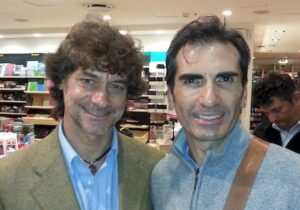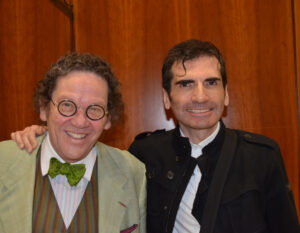di Silvana LAZZARINO
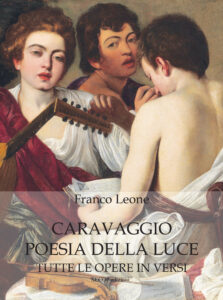
Franco Leone, the Apulian poet has got a great success for the recent book “Caravaggio Poesia della Luce” (“Caravaggio Poem of the Light”) by Secop Editions. This book has been appreciated by critics and has been awarded internationally.
Franco Leone’s poetry becomes emotion, reflection, exaltation of thoughts and returns stories and traditions that speak us about the beauty of Italian art and the landscape in a different style with a vibrating voice between poetry and emotion. Computer doctor, poet and writer, Franco Leone, Apulian from Corato, is fascinated by the evocative force between history and tradition of palaces, villas, churches, monuments and in particular by the works of great painters. In his books you can find prose and poetry texts where you can breathe the beauty and the wonder of Italy. Particularly the recent book “Caravaggio Poesia della Luce” published by Secop, which made him famous to the general public keeping the attention of critics, obtained important national and international literary awards and prizes.
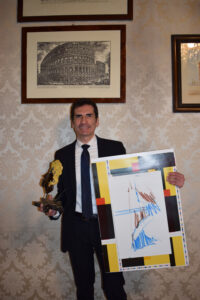
The merit of Franco Leone is to combine poetry with art, converting in poems the vibrating of the lights and of the shadows of sacred or profane scenes enclosed in the paintings of Caravaggio, considered one of the best painters in art history. Among the prizes awarded to this precious book in poetry dedicated to Caravaggio we can remember the “International Literature Prize Spoleto 2019” at the «Festival dei Due Mondi», the “Europe and Culture of New Humanism Award 2019” conceived by the famous poet and writer Anna Manna, for the “ItaliaMia“, The “Prize Comunicare l’Europe 2020” in Rome with the Patronage of the Chamber of Deputies.
Through poetry Franco Leone gives new emotion to art, in particular to the art of the sixteenth and seventeenth centuries which lends itself to an interpretation that is not only visual, but also emotional.
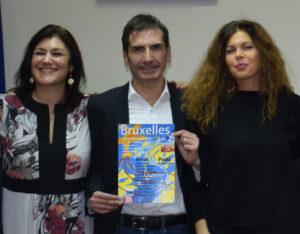
This is possible thanks to the use of hendecasyllable, that Leone particularly prefers for the elegance and the musicality of the verses. The verses with their harmony and their balance articulate the emotions of the work of art, giving voice to the enveloping and irreverent realism of Caravaggio’s paintings, enhanced by the contrasts of lights and shadows shown by the poses of the characters.
In the book there are over 94 works, among those recognized and others of uncertain attribution, with 130 photos, each supported by the poem referring to it, whose stylistic and metric choice is perfectly integrated with the classical tradition. Thus Michele Cuppone, one of the best researchers and scholars of Caravaggio, describes the work of Franco Leone:
“Each page offers moments of delight in the highest meaning of this word, giving us a dimension of quiet out of time“.
With this work Franco Leone also underlined the importance of the musical scores present in five works by the Lombard painter such as in the Rest during the Flight into Egypt of the Doria Pamphilj Gallery in Rome or in the Youth Concert of the Metropolitan Museum in New York
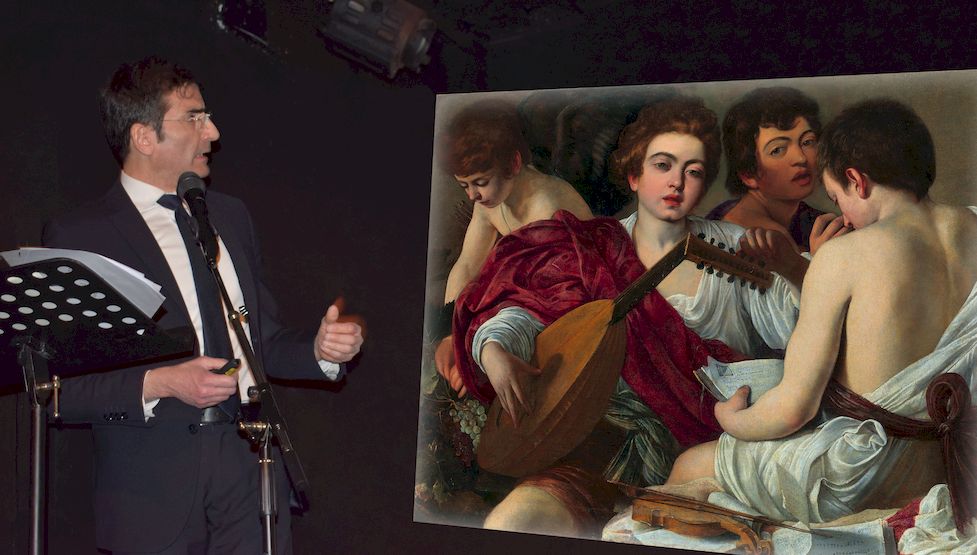
His poems particularly expressed through the hendecasyllables’ musicality of the sonnets, were particularly appreciated not only by Michele Cuppone, but also by Vittorio Sgarbi, Philippe Daverio, Alberto Angela, Franco Di Mare and other intellectuals. We asked the author some questions.
Interview to Franco Leone by Silvana Lazzarino
1) How and when was your passion for art and poetry born?
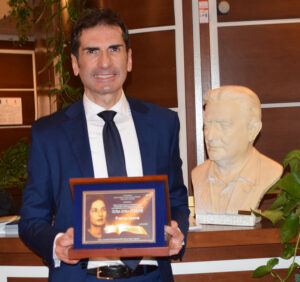
“I was in Arezzo for a trip and in front of the beauty of Piazza Grande bordered by historic buildings, tower houses, the apse of the church of Santa Maria della Pieve and the Vasari Lodges, I impulsively decided to describe in a poem the artistic emotions of that square. I was attending a dialogue between palaces of seven different centuries in which each of them spoke of its own age, but I saw that the church almost disdainfully turned its back on them with its apse. Then I translated this “dialogue” into a poem. Soon I thought to describe other towns such as Prato, Pistoia, Lucca, Pisa, Siena and then also towns in the south of Italy, such as Corato, Bari, Troia, Trani, Lecce… Thus a collection of poems was born. Each of poem was dedicated to an Italian locality, 102 in total. I decided to title this work “102 Splendors of Italy in poems”.
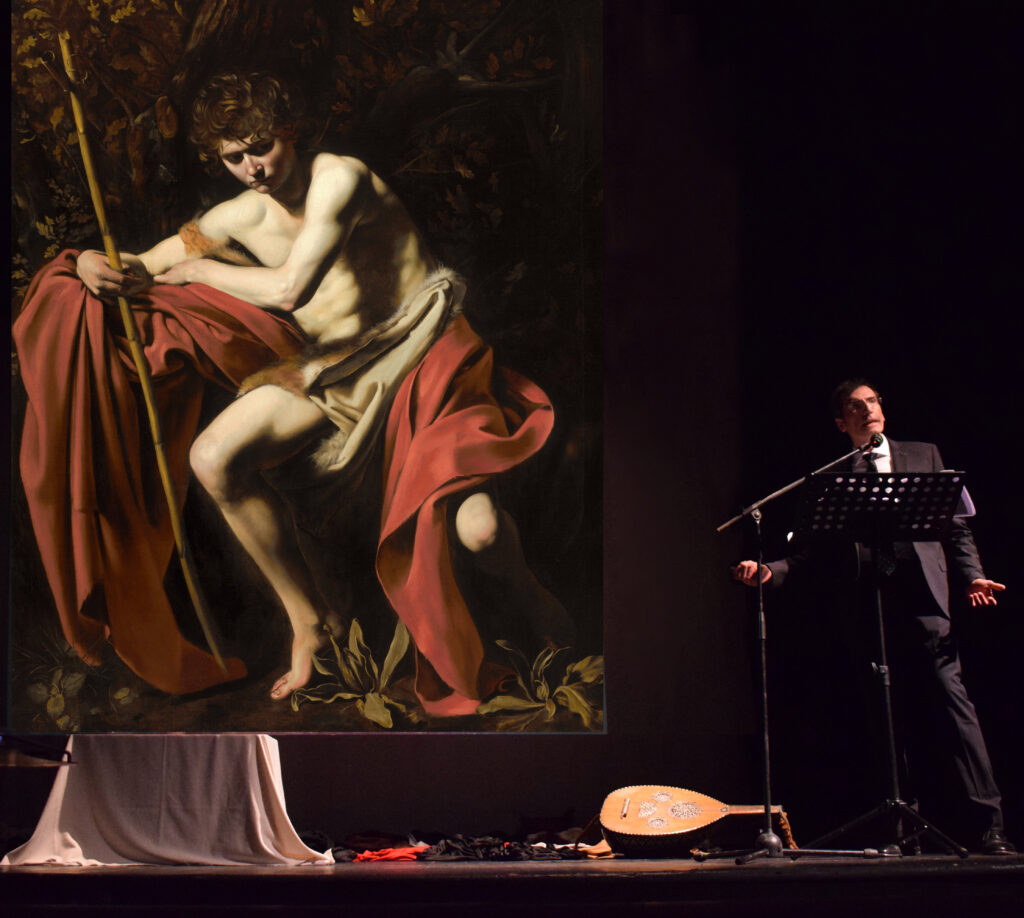
2) Why did you choose to not continue your humanities studies? Has your education contributed to arouse this interest?
My first passion is technology, along with physics and astronomy, so, although I really love classical literature, I decided that my future would be information technology. However, the love for literature, art and poetry (from liceal times) settled inside me. I kept this passion locked inside me for different years, but sooner or later I would have to make sense of it.
3) What is your job?
I am an IT doctor, so I create management softwares especially for sharing databases on the “cloud”, but I also deal with training at various levels, both in business and school, from primary school to the training of the teachers.
4) Why did you choose the hendecasyllable? Have you composed other works in poems?
I could have chosen the free verse, but it would not have rendered the ancient and artistic beauty of our Italian towns. My reference was D’Annunzio with his “Città del Silenzio” (“The towns of silence”). The “supreme poet” from Abruzzo described only the Northern Italy and the Central Italy towns. So I also wanted to consider the cities of our wonderful South. Then the passion for art and for poetry took over and I decided to describe Italian works of art too, again with the use of hendecasyllable. So I wrote a second book with the Secop Editions entitled “Looking for Italy, art itineraries in poems”. It is a journey through Italian art described in verses. This work allowed me to receive the «William Prize Shakespeare» in Messina and the «Villa Garbo Prize» in Taormina and to become a meritorious member of the «Antonello da Messina» Participation Foundation, one of my absolute favorite Italian artists of the 15th century.
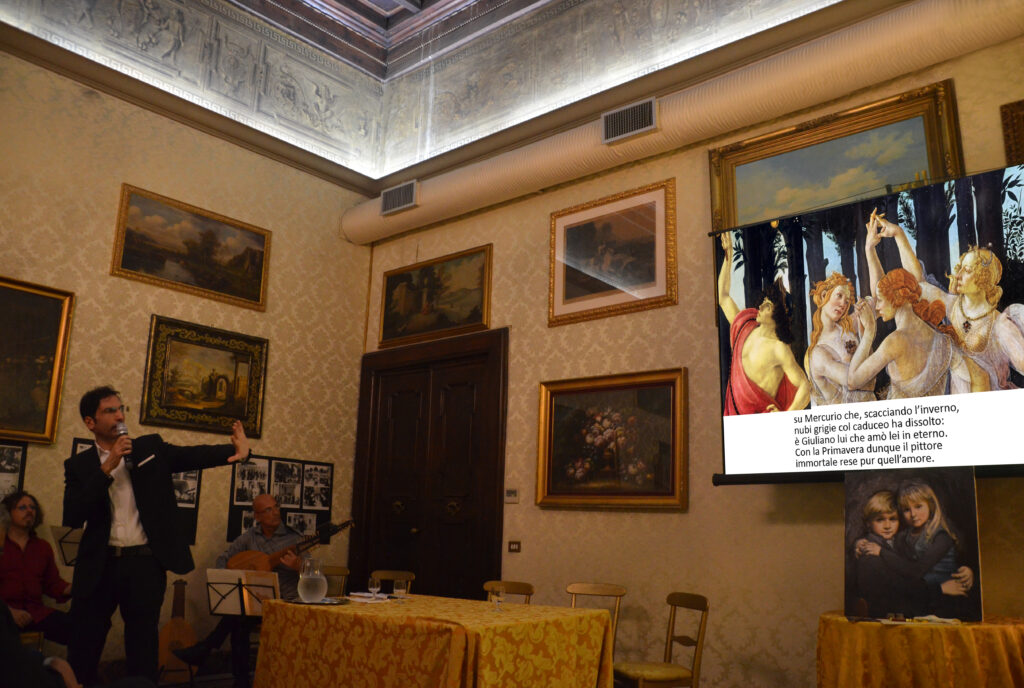
5) Why did you choose Caravaggio for your third book “Caravaggio Poem of the Light”?
I like the raw realism of Caravaggio: his models are simply persons from the street. Through Caravaggio art the derelict humanity of the last persons suddenly is catapulted onto the altarpieces. Inside the churches and above the altars, there is the revival of the last humanity that becomes first humanity. So prostitutes become Madonnas, urchins become angels, elders and beggars become apostles or saints. Above all, Caravaggio’s light is spectacular, because is able to probe the objects and minimal details of a scene, pushing them into the space of the observer. Caravaggio performs the miracle of three-dimensionality.
6) What are your favorite painters besides Caravaggio?
My favorite artists are Michelangelo, Leonardo, Antonello da Messina, Artemisia Gentileschi, Pontormo and Rosso Fiorentino.
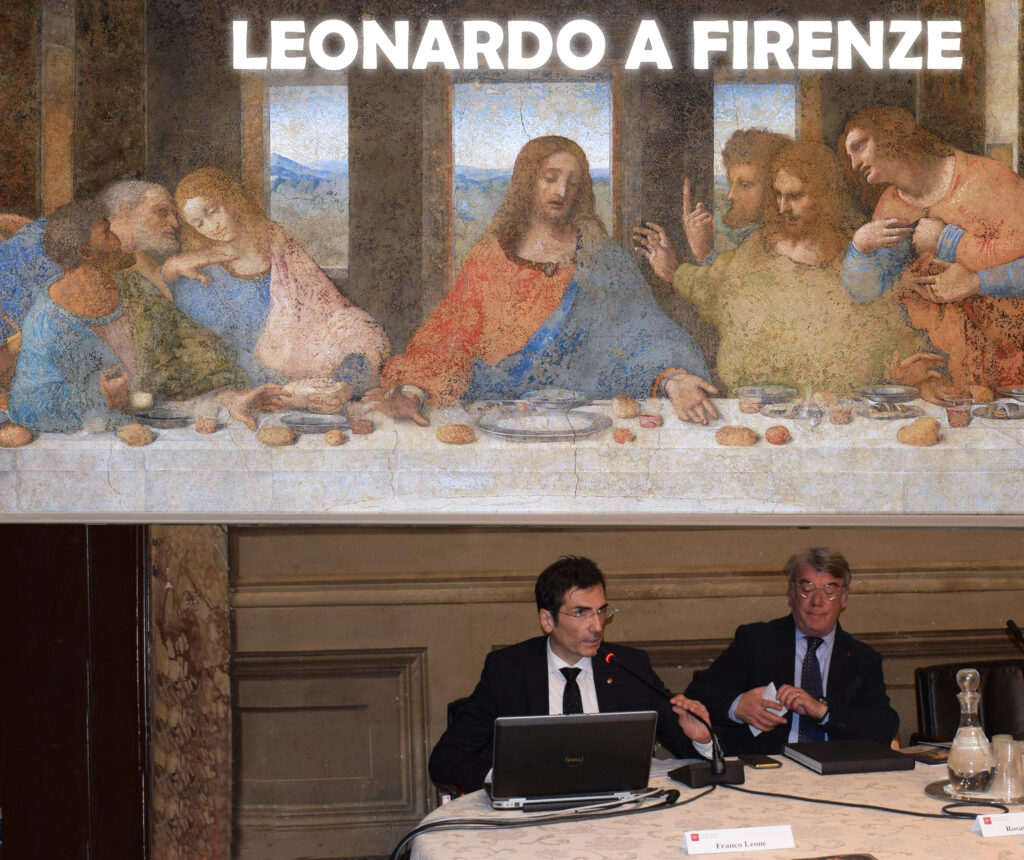
7) Do you think to focus on some other authors in the future, always adopting the poetry and hendecasyllable?
It is possible. I have already dedicated some events to some artists: to Giotto, to Antonello da Messina and to Leonardo in the 500th anniversary of his death.
8) Why did you choose this cover for your book?
The work I chose for the cover is the Youth Concert of the Metropolitan Museum in New York, because it contains the three arts that are described in my book. On the left the young man who tunes the lute represents the music; in the center there is a youthful self-portrait by Caravaggio, that represents the art of painting; on the right a third young man is reading a musical score composed through a poem of the Neapolitan poet and humanist Jacopo Sannazaro. This boy represents poetry to me. This painting gave me the inspiration for cultural events that include many arts. In fact, I “bring” art, music and poetry through events throughout Italy (Florence, Rome, Modena, Spoleto, Rieti, Bari, Taranto, Lecce, Messina …) with two professional musicians: the master Pasquale Rinaldi of the Conservatory of Foggia on the transverse flute and my brother (as well as cardiologist) Nino Leone on the harpsichord. My poems about Caravaggio’s works are introduced by the musical scores of Caravaggio’s paintings played by these two excellent musicians.
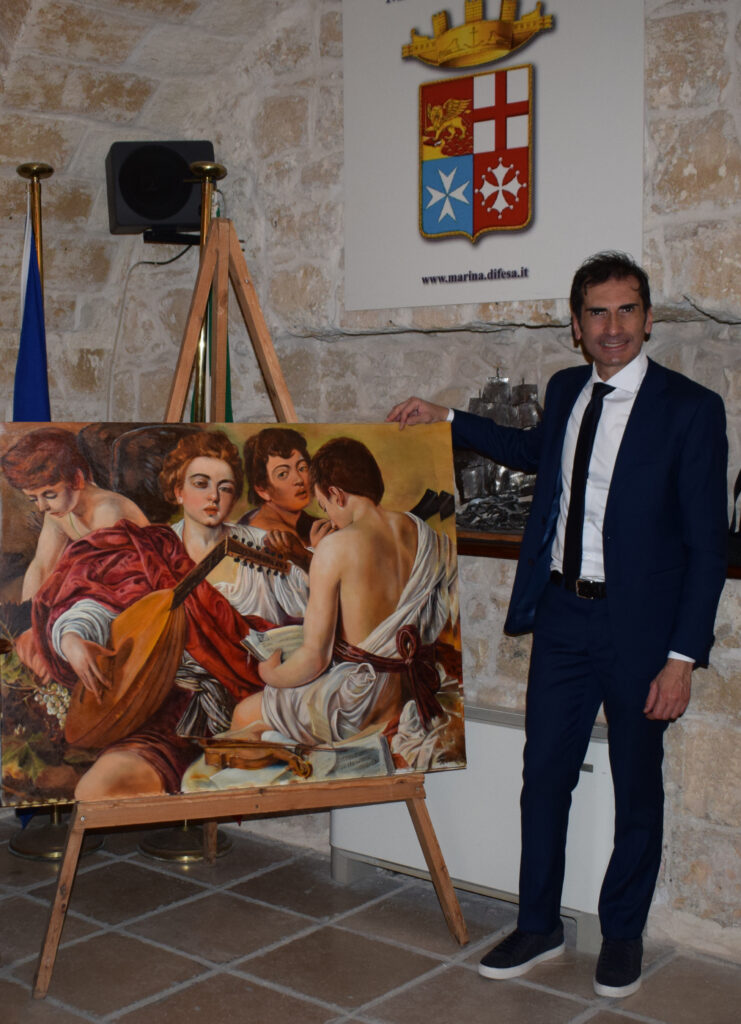
9) How long did the writing of the last book?
About three and a half years. The work for this book was remarkable. With constant commitment and considerable research I tried to “recover” all the works of Caravaggio (the certain and the attributed paintings) and I described them in hendecasyllables according to the metrics of Dante and Petrarca, through an ancient language of the Caravaggio’s time. I also analyzed all the musical scores painted in his works and among them I discovered one never identified before. This score is present in the painting of Rest on the Flight into Egypt.
10) I would like to focus on Rest on the the Flight into Egypt, the first religious work by Caravaggio made in 1597. What is the musical composition present in the score in this painting?
In the book “Caravaggio Poem of the Light” I tried to analyze all the possible musical scores present in the works of the Lombard painter, for example, the motet entitled “QVam Pulchra es” by Noël Bauldewijn taken from the “Fourth Book of the motets of the crown” by Noël Bauldewijn present in the “Rest on the Flight into Egypt”, the four madrigals by Jacob Arcadelt in the “Lute Player ” from St. Petersburg, the two madrigals by Francesco de Layolle and Jachet de Berchem in the “Lute Player” from New York and the madrigal of the Neapolitan composer Pompeo Stabile in the “Youth Concert” from New York. Motets are sacred musical compositions typical of the sixteenth century, while madrigals are profane compositions very popular in the same period. Caravaggio inserts motets in a religious painting (precisely the “Rest during the Flight into Egypt”), while he paints the madrigals in profane-themed works (the “Lute players” or the “Young Concert”). I now answer to your question about my “musical discovery”. In the “Rest on the Flight into Egypt”, in addition to the aforementioned “QVam Pulchra es” by Noël Bauldewijn, there is still another motet visible on the page of the book half hidden by the angel’s arm. My careful studies led me to identify the motet of Iosquin des Prez “LEctio actuum appostolorum”, because it is the only one that begins with the letter L present in the “Fourth Book of the motets of the crown” by Noël Bauldewijn. I used my technologic knowledges to identify this motet. The technology helped me to access the bibliographic archive of the University of Oxford, from which I directly “drew” the “Fourth Book of the motets of the crown” by Noël Bauldewijn, allowing me to discover the motet of Iosquin des Prez. In support of my hypothesis there are also the only two notes that can be recognized on the left of the angel’s forearm: a B and a C in the key of soprano, both minims, that in the motet intone the first two syllables of the word “advenientis“. So, my book reinterprets the great Lombard artist in a poetic and musical view.

11) Among the works of Caravaggio there is also the only one made by the fresco technique commissioned by Cardinal Francesco Maria del Monte protector of the artist: Jupiter, Neptune and Pluto at Villa Ludovisi in Rome. This paint refers to mythology and astrology through the three deities associated to the three elements (air, earth and water) and to the three symbolic animals (eagle, Cerberus and sea horse) arranged around a celestial sphere with zodiac signs. What fascinated you about this fresco that contains a profound symbolic iconographic meaning?
I like the reference to astrology with the zodiac signs including Pisces, Aries, Taurus, Gemini. To depict the complex scene with the three divinities Caravaggio used a large flat mirror on which he himself stood, so that Jupiter, Neptune and Pluto are three self-portraits by naked Caravaggio himself. Cerberus is shown through the three portraits of the painter dog whose name was Cornacchia.
12) When was your book first presented?
I presented it for the first time in Messina on 29 September 2018, the day of the anniversary of Caravaggio’s birth, in one of the most important places of his escape through Italy: the Monte di Pietà where the “Resurrection of Lazarus” was commissioned to the painter. It was an immense emotion.
13) You have received important prizes and awards for your works. Can you tell me some of them?
The Merit Mention at the ‘Salvatore Quasimodo 2015’ International Literary Prize; the “William Shakespeare Prize – Pro Litteris Humanitate Scientia Iustitia” awarded by the European Center for University Studies of Messina; the “Villa Garbo Poetry Prize 2017” awarded by the UNESCO Club of Taormina; the International Literature Prize “Spoleto Art Festival 2019” “awarded to the “Festival dei Due Mondi di Spoleto 2019”; the Prize “Italia Mia” at the University “La Sapienza” of Rome; the “International Award Communicating Europe 2020” for professional and work merits and for the significant civil and cultural commitment with the patronage of the Chamber of Deputies in Rome.
14) You have also attended prestigious cultural events. What are the most significant ones?
The artistic event the “From Antonello to Caravaggio” at the Flags Hall of Messina in 2016; the “Jubilee of Universities” in 2016 at Ferrajoli Palace in Rome; the event “Leonardo in Florence” dedicated to Leonardo da Vinci for the 500th death anniversary at Regional Council Tuscany Palace in 2019.

15) Writers, journalists, television presenters, critics and art historians of international fame, including Vittorio Sgarbi and Philippe Daverio, have greatly appreciated your publications, writing commendable reviews about it. Would you like to mention some of their phrases referring to reviews?
Of course. «Franco Leone translate the beauty through the poetry by Torquato Tasso.» – Vittorio Sgarbi; «Franco Leone is the creator of a unique work. Several seventeenth-century authors and mostly contemporaries of Caravaggio, celebrated some of his paintings in verse. Leone did more, dedicating a poem to each painting by the Lombard genius. His poems denote a careful preliminary iconographic analysis and particular interest in the readings that Caravaggio’s art inspired, as well as a great personal sensitivity. Each page offers moments of delight, giving us a dimension of quiet out of time.» – Michele Cuppone, researcher and scholar of Caravaggio; «With his words and with his sensitivity Leone is able to convert art in shining poetry!» – Alberto Angela; «I want to thank Franco Leone for translating into poems what I tried to discover and to say about Caravaggio» – Tomaso Montanari, art historian and full professor of History of Modern Art at the University of Siena; «Leone is a fellow writer with the sweetness of the word» – Franco Di Mare, RAI journalist; «I appreciate the “Frank Lion” even if poetry is not my competence.» – Philippe Daverio, art critic; «The author in a few verses, analyzing Merisi’s works, catches the particular from the universal with an uncommon acuity and sensitivity.» –  Adriana Conconi Fedrigolli, art historian; «He makes the South, Italy and Apulia vibrate with the luminous voice of his poetry» – Marcello Veneziani, writer; «When I read a ‘poem’ by Franco Leone for the first time, I felt the musical presence of a cantor who narrated the art. Now I feel the presence of an ‘aedus’, a Greek cantor who according to tradition is blind, since the Muses speak through him. Art is studied, explained, sublimated by him. In front of art, he pauses slowly and with his song invites us to observe in silence, since the Muses are speaking through him.» – Marta Galvan, restorer of the works of Caravaggio and Guercino. «Franco Leone is a Poet of tremendous talent and vision.» – Princess Rita Boncompagni Ludovisi.
Adriana Conconi Fedrigolli, art historian; «He makes the South, Italy and Apulia vibrate with the luminous voice of his poetry» – Marcello Veneziani, writer; «When I read a ‘poem’ by Franco Leone for the first time, I felt the musical presence of a cantor who narrated the art. Now I feel the presence of an ‘aedus’, a Greek cantor who according to tradition is blind, since the Muses speak through him. Art is studied, explained, sublimated by him. In front of art, he pauses slowly and with his song invites us to observe in silence, since the Muses are speaking through him.» – Marta Galvan, restorer of the works of Caravaggio and Guercino. «Franco Leone is a Poet of tremendous talent and vision.» – Princess Rita Boncompagni Ludovisi.
16) What message do you want to give to those who underestimate the Italian artistic heritage?
Let’s think about this number: 55! Italy is the first nation in the world by number of UNESCO World Heritage Sites (55 sites). In a such small area, among mountains, hills, plains, seas, peninsulas, islands, volcanoes… there is the highest concentration of artistic, archaeological and landscape beauties on the planet. The whole world admires us! We must give ourselves more value: we could live on tourism alone.
17) Have you projects for the future?
I have a large charity project that I will carry out for people who have fallen into poverty due to the Coronavirus, again through art, poetry and music. I am also trying to bring, with the my UNESCO Club of Bisceglie, the cathedral of Troia in the UNESCO World Heritage Site due to the uniqueness of its rose window.
Silvana LAZZARINO Rome, 2021 February 6th

